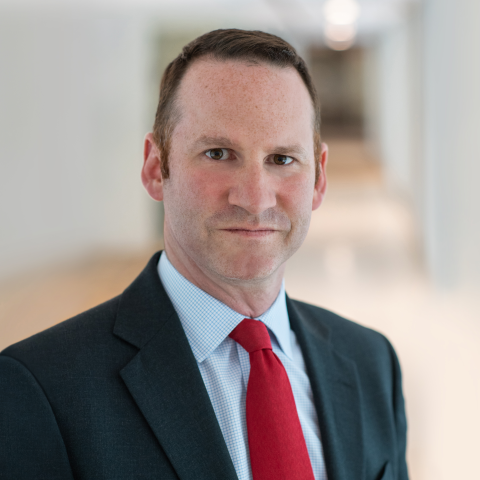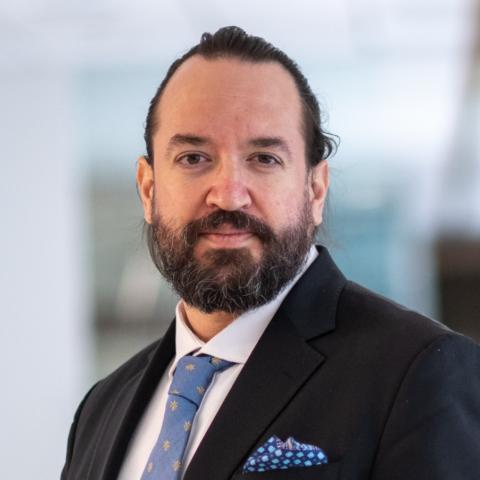For sophisticated criminals, high-end artworks are more than just pretty pictures. Latin American cartels, a major Hezbollah financier and powerful Russian oligarchs have all exploited the luxury art world to evade sanctions and launder potentially billions of dollars globally each year.
The U.S. is by far the world’s largest art market, but it is also one of a dwindling number of jurisdictions where art sales are not subject to any anti-money laundering regulations at all. This makes it highly vulnerable to exploitation by adversaries who will use the proceeds to threaten Americans’ safety and security.
The refined elegance of a high-end art gallery might seem worlds away from the chaos of a cartel turf war or the brutality of a major terrorist attack. But there are three reasons art has become an attractive prospect for the professional money launderers who support these criminal groups.
First, it is one of the relatively few ways to vest thousands or even millions of illicit dollars in a portable physical asset. These can be located in freeports or other secure locations outside of banks, where funds could be vulnerable to being frozen or seized by law enforcement.
Second, the value of an artwork is subjective, making it easy to fiddle with the numbers. There is nothing inherently suspicious about a buyer paying significantly over or under price if they claim to like the piece.
And third, the art world’s culture of exclusivity and discretion suits criminals trying to hide their activities from law enforcement, just as much as wealthy patrons keen to avoid the public eye. Even legitimate deals are often structured using professional intermediaries, shell companies and offshore jurisdictions.
Despite these vulnerabilities, American art dealers currently have no legal obligation to familiarize themselves with basic money laundering risks, let alone perform due diligence on shady customers or report suspicious transactions to the authorities.
Of course, many reputable galleries do perform these responsibilities for the sake of their own credibility. But there are no consistent legal standards or accountability mechanisms for those who choose to turn a blind eye.
This is not the case in other major art markets such as the European Union, the United Kingdom or even China.
Fortunately, the fix is relatively simple. The Treasury Department already possesses the legal authority to bring art dealers into the anti-money laundering framework established by the Bank Secrecy Act in 1970. Despite its name, this legislation also encompasses other high-risk sectors such as jewelers, yacht dealerships, pawnbrokers and casinos.
Congress also recently mandated the inclusion of the antiquities sector, which faces similar money laundering risks to those of the art world (though more than three years after the deadline, Treasury has yet to implement the legislation).
In fact, the Treasury Department itself concluded in 2022 that art markets should be regulated under the Bank Secrecy Act. However, officials rightly prioritized extending the regulations to the investment and real estate sectors instead — compared to which, the amount of money laundered through the art market is trivial.
But having completed that work last year, the Treasury Department should now turn its attention back to the art world. Otherwise, dirty money, including profits from fentanyl sales, will continue to slip through the fingers of gallery owners in Miami, Los Angeles and New York.
There is a nexus between China’s emergence as the world’s fastest-growing art market and its status as the main driver of the fentanyl trade that creates new cause for concern.
It is highly likely that the Chinese brokers who have taken over money laundering operations for the Mexican cartels are now funneling drug dollars into the U.S. art market. And given Chinese elites’ voracious appetite for expensive art, it is even possible that valuable works are being used as illicit payment for fentanyl precursors, much as trafficked wildlife products are.
Will it work? When Mexico imposed similarly stringent anti-money laundering regulations on art dealers in 2014, gallery sales plunged by up to 30 percent. This tells us just how insidious the problem was, but also how effective these types of regulations can be in scaring off cartel money-launderers.
The massive U.S. art market is by no means similarly dependent on narco cash, so regulation need not be so painful. But it is important to avoid unduly burdening honest businesses. Happily, there is no need to include low-level vendors at all: Hobbyists selling their watercolors on Etsy are not the problem here.
And for the high-end dealers potentially are being exploited, wittingly or unwittingly, reporting requirements should be tailored specifically to their capabilities and proportionate to the risks.
Unlike banks, art galleries generally don’t have millions of dollars lying around to spend on vast compliance departments. But they don’t need to in order to put simple safeguards in place.
The Trump administration is moving to cut red tape across the board, but unlike some other anti-money laundering measures, the Bank Secrecy Act framework has been spared. This is because it is mission-critical for achieving a key Trump priority: Destroying cartel finances and terrorist financing networks.
Asking high-end art dealers to perform basic due diligence and flag suspicious customers to law enforcement will not, in itself, cripple the cartels or stop the terrorists. But it will disrupt their money laundering activities and deprive their brutal leaders of ill-gotten gains.
Art has often been treated as nothing more than an asset by the wealthy, but it need not be one that criminals can use to spread death and misery.



















